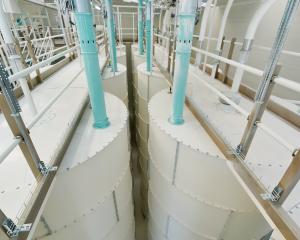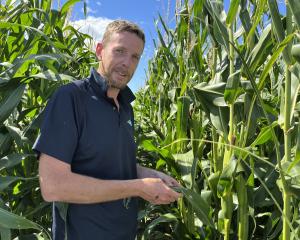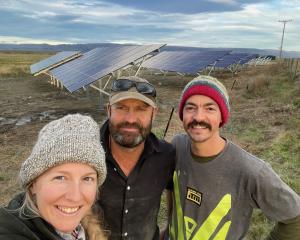
Mr Faulks, along with business partner Graham Carr, own Deer Milking NZ Ltd.
Their milking mob of 400 Red Deer is based at Lincoln Hills, near Mt Somers, along the foothills of the Southern Alps.
The farm, its people and its commercial milking deer are set to feature on television farming show Country Calendar on July 7, at 7pm.
Despite appearing on the popular farming show many years ago, Mr Faulks said it was ''bloody horrible'' being followed around by the film crew who were on site for a week midway through the milking season.
He said the farming questions were quite easy but the personal angle was harder. Especially questions around the loss of his late wife, Lesley, who died from breast cancer in 2008.
''I would have liked to have seen and edited the footage [before its airing],'' he joked.
The four days of filming will be condensed into about 23 minutes, and Mr Faulks will watch it with fresh eyes, just like everyone else.
The farm has just finished its fourth season deer milking.
The deer milking season is shorter than the dairy season and runs from January to May.
They have built up a milking mob of 400, but only milk 120 at a time.
The once-a-day milking, using specifically ordered mini sheep milking cups, produces on average a litre per hind. They have four teats.
While the milk has been collected and used for cheese production, by Talbot Forest Cheese, in nearby Geraldine, Mr Faulks said it was time to look at the operation and whether to take it further.
Cheese - the Gouda and Havarti made in their The Deer Milker brand - was not necessarily the end game for their milk, he said.
They had sold frozen milk product which was destined for cosmetic markets and were exploring other avenues.
They were in the process of getting the properties of the milk tested by North Island company Callaghan Innovation.
''We are at the point where we decide whether to go to the next level. It will depend on the right product search,'' he said.
It might involve significant investment but will offer better financial outcomes, he said.
Once they have the answers they will decide.
Deer milk is high in milk solids, more than double cow's milk.
''If it's put in the fridge, it stays smooth and doesn't settle or separate like cow's milk. It stays complete.
''We've learned we can milk deer commercially,'' Mr Faulks said.
That was the simple side of it. The other side needed the help of a consultant to deal with Ministry for Primary industries (MPI), mostly around deer milking processes, including pasteurisation and frozen milk storage.
''MPI couldn't just tick the boxes. No-one thought deer could be milked.''
But, with the ''enormously helpful'' efforts from staff at Talbot Forest Cheese, they got there, he said.
Costs so far have included a milking platform and upgraded pasture species to give the ''best quality feed as we can, to get the best quality milk, with volume''.
Milking 120 deer takes about three hours.
It has been a labour of love so far, setting up the plant and getting the hinds used to being milked, but Mr Faulks puts it down to a team effort by deer milkers Diane Herron and Simon Wakefield, as well as administrator Cindy Mackenzie, who waded through a lot of the bureaucratic paperwork.














